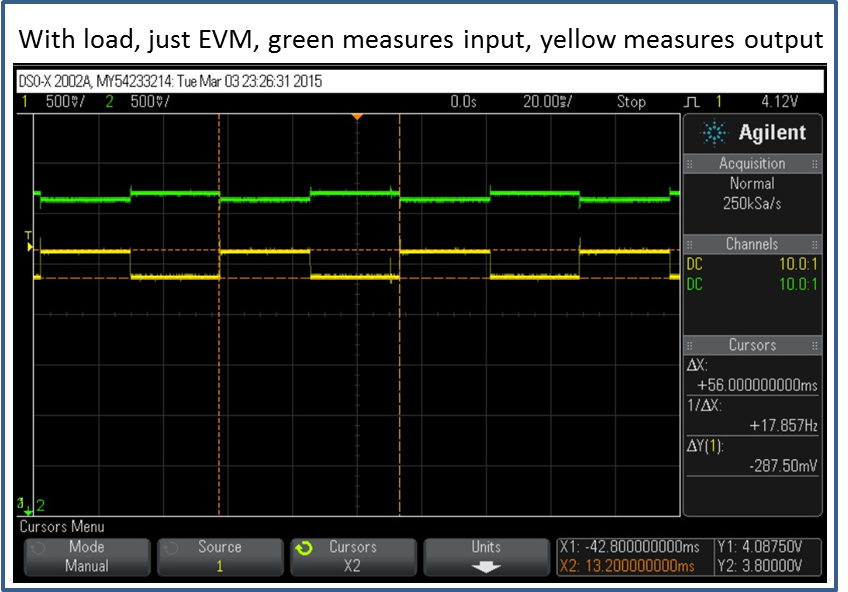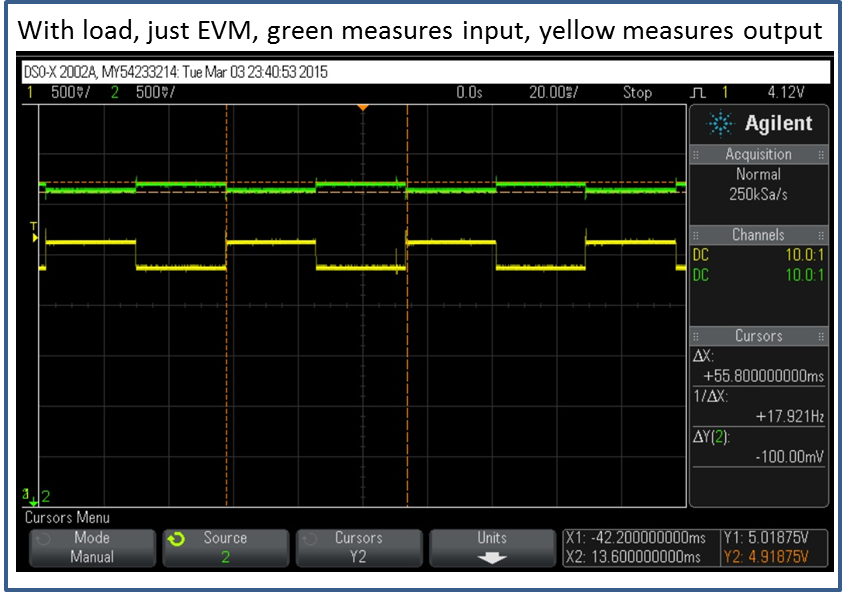First of all, I am using BQ24090EVM-001 evaluation boards, which I set the RISET = 1 kOhm (current is around 540 mA); Enabled TS with simple 10 kOhm resistor (no TS function or connection to the battery); ISET2 set to follow whatever ISET is; Also, enable CHG and PG LEDs function. I have tested two BQ24090EVM-001 boards and the issue happens on both of them so that I believe I could rule out the chance of anything wrong with the board.
I have developed a product powered by single cell Li-ion battery. The charging function is monitored by one mcu (inside the product). This mcu controls the open and close of MOSFET to control the charging function.
I am testing the charging for this product using the evaluation boards. Occasionally, I could find the charging is abnormal: Once connect the evaluation board OUT and GND to the product charging pin (positive and negative), 1) the CHG LED never lit up; 2) scanned waveform on the charging pin of the product shows a square wave with 18 Hz frequency and 100 mV amplitude (the frequency happens to be the same as battery detection mode, except the square wave in battery protection mode is from 4.2 V to 3.8 V.); 3) the current is actually drawn from the OUT pin if measure with DC power supply, however, the current value is from 100 mA or so to 300, 400 mA, fluctuating, not stable 540 mA if function correctly (with CHG LED on).
The PG LED always lit up during the process.
Strangely enough, the above phenomenon happens occasionally, with no pattern found. Like 80% of the time, it is charging just fine!
If I had a chance capture this on my scope, I will post it here.
Can anybody tell me what is going on? Is it a problem with the chip or somehow it is due to the design?
Thank you.




